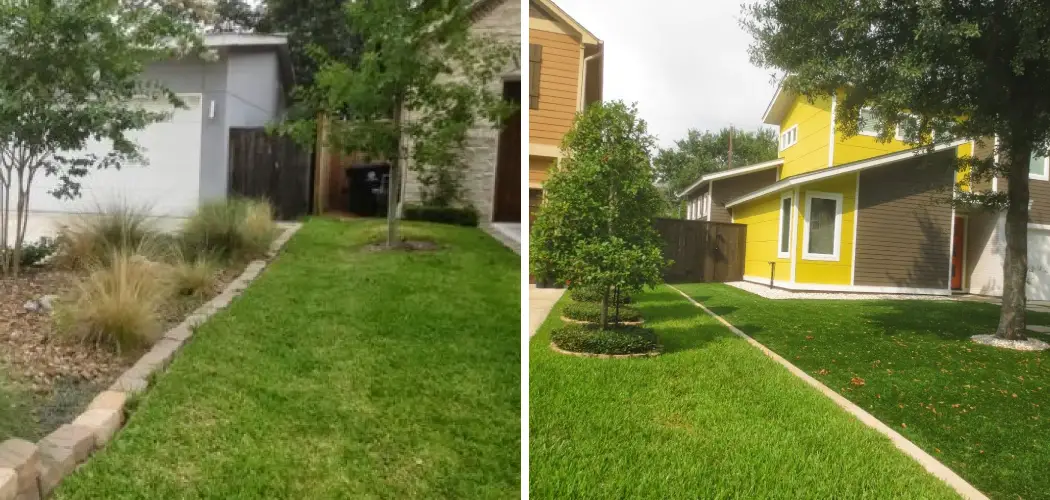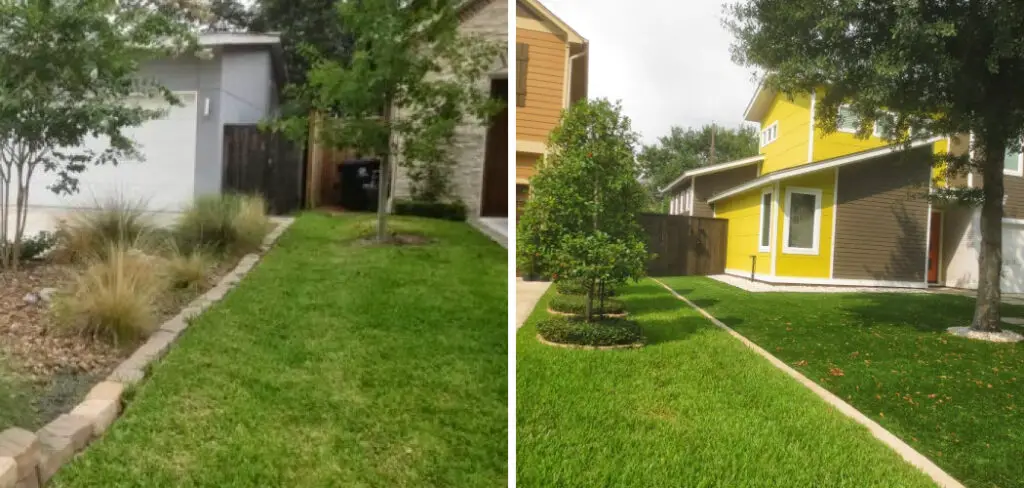
Have you ever wanted to create separate outdoor areas without a physical fence blocking them off? You must know how to separate yards without a fence. Perhaps you are looking for practical solutions for creating multiple distinct yards or green spaces within one property.
If so, then read on! In this blog post, I will provide detailed advice, including specific product recommendations and insights, on how to effectively separate your yards while enhancing the look of both interior and exterior living spaces.
We’ll cover why having multiple areas within your yard can be beneficial as well as the many ways that you can use landscaping materials, plants, and more to achieve it. Whether you opt for a low-cost solution or something more complex involving decorative walls and elaborate landscaping work.
In this blogpost, an answer will be provided about what’s best for transforming diverse parts of your backyard into distinct outdoor rooms.
Tools You Will Need
- Landscaping materials such as mulch, stones, gravel, and soil
- Plants of various sizes and shapes
- Decorative wall elements made of steel or stone
- Garden hoses
- Watering can
These are just a few of the items you may need to create distinct outdoor spaces in your yard without the need for a fence. Depending on how ambitious your project is, you may require additional tools or elements to fully transform your outdoor area into personal and distinct yards.
6 Steps Guide on How to Separate Yards Without a Fence
1. Add Different Landscaping Materials
When separating two yards without a traditional fence, one creative way to differentiate them is to incorporate different landscaping materials for each space. Consider including greenery, rocks, wood chips, and gravel to create an eye-catching yet functional border. Trees and hedges provide a lovely visual effect while helping to define the edges of each yard.
Wood mulching options can be used solely or intertwined with stones like flagstone, pea gravel, or larger chunks of rock – all offering unique textures sure to add interest to any space. Choose hues and material combinations that balance the surrounding area while creating a delightful edge between the two areas.
With many great options available, it’s easy to establish distinctiveness even in a communal outdoor area.
2. Plant Trees and Shrubs
Planting trees and shrubs can be a great way to add privacy and separation between yards without the expense and effort of putting up a fence. If you’re looking for an inexpensive and easy method to divide yards, look no further than your local garden center.
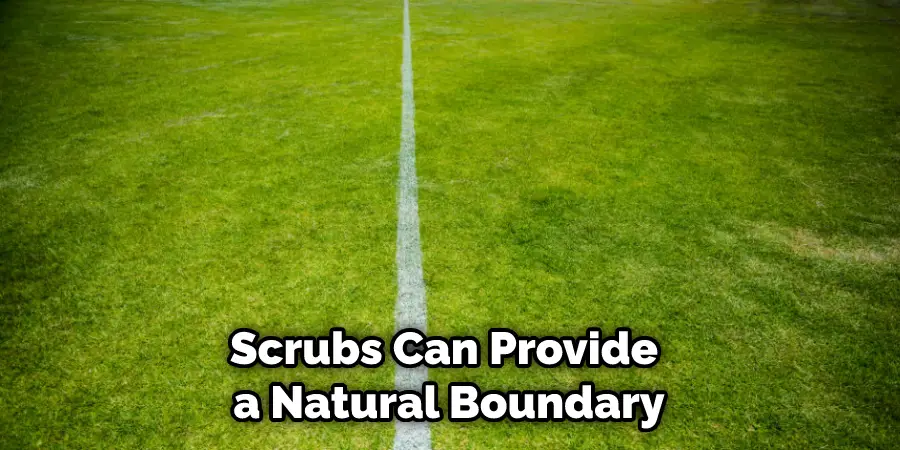
Trees and scrubs can provide a natural boundary line while at the same time adding aesthetic value, as well as year-round color, texture, and interest.
In addition to this, trees act as natural air filters to remove dust and pollutants from the air, helping create cleaner surroundings for your neighborhood.
Planting trees and shrubs is also a green and eco-friendly solution since these plants absorb carbon dioxide from the atmosphere throughout their life spans, reducing greenhouse gases that affect climate change.
3. Use Decorative Walls
If you are looking for a creative way to separate the yards in your neighborhood, decorative walls can be an effective and beautiful solution. Easy to install and available in various shapes, sizes and designs, these walls ostensibly define boundaries without requiring a fence. The right decorative walls can offer aesthetics like no other structure, with some also serving as either freestanding or retaining purposes.
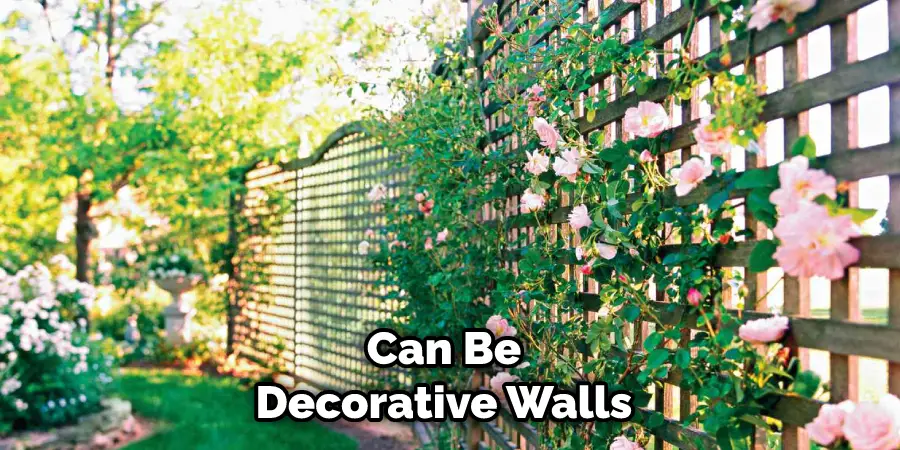
Furthermore, they’re typically crafted using inert materials that can withstand the test of time depending on the variant you pick. From vintage tile to rustic blocks or even hand-painted panels, buyers have multiple options to choose from while shopping for decorative walls – so start browsing through designs today if this is an idea worth trying!
4. Install Garden Hoses
Installing garden hoses to separate yards could be a great cost-effective way to help manage boundaries between properties. Not only do garden hoses create an aesthetically pleasing visual boundary, but they also deter outdoor activities and noise from spilling over into other yards.
For example, if one family has small children who love running around, it can be difficult for the neighbors to relax while they are playing outdoors without an appropriate barrier and visible reminder that each yard has its own space.
Similarly, in places where there is a lot of foot traffic, such as near parks or busy streets, using garden hoses can be especially beneficial for ensuring that your guests and visitors will feel comfortable and not intrude on other’s private spaces.
In addition to creating these boundaries, garden hoses also double as a low-maintenance and eco-friendly way to water gardens or landscape areas of your yard since they can reduce runoff from sprinklers that may leak onto neighboring yards.
5. Water Plants Strategically
Creating a physical barrier between properties with a fence is not the only way to separate two yards. Strategically planting water plants can also create privacy and an effective natural divide. Native species like cattails, cord grass, and bulrush are all marsh plants in North America that serve as attractive cover for sunny waterfronts.
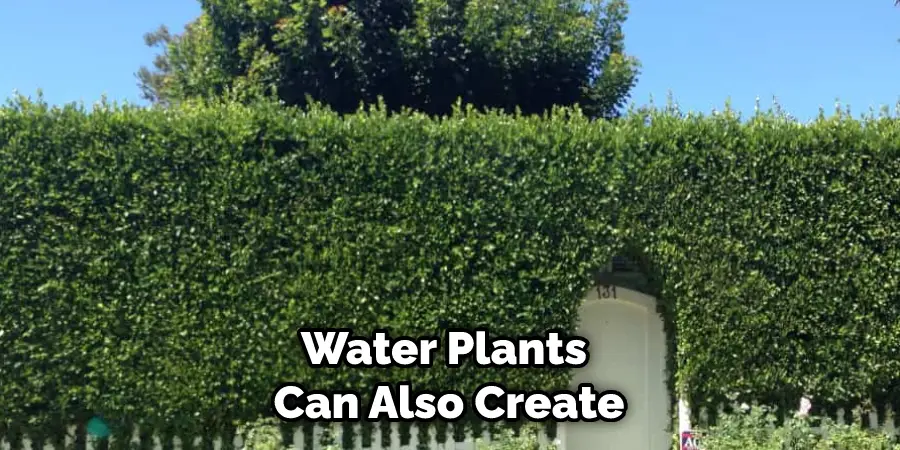
In addition to providing full coverage for an expanse of open water, some species also help keep waterways healthy by stabilizing sediment, improving oxygen levels, and providing food for fish and other wildlife.
By strategically placing water plants near the property line of each yard, homeowners can maintain a feeling of openness while keeping the two outdoor spaces distinct and private from each other.
6. Install Lighting Fixtures
Installing lighting fixtures around a property can be an effective and attractive way to separate the yards of two homes without erecting a fence. This solution is a great option if you want to give yourself some extra privacy or keep certain areas of a yard secure from potential intruders. Lighting fixtures can come in all shapes and sizes, letting you customize the look, brightness, and security of your area.
Lights that move and activate with motion sensors are especially popular for creating an extra layer of safety. Installing lighting fixtures to separate yards may require some upfront cost, but the long-term benefits make it worth the investment.
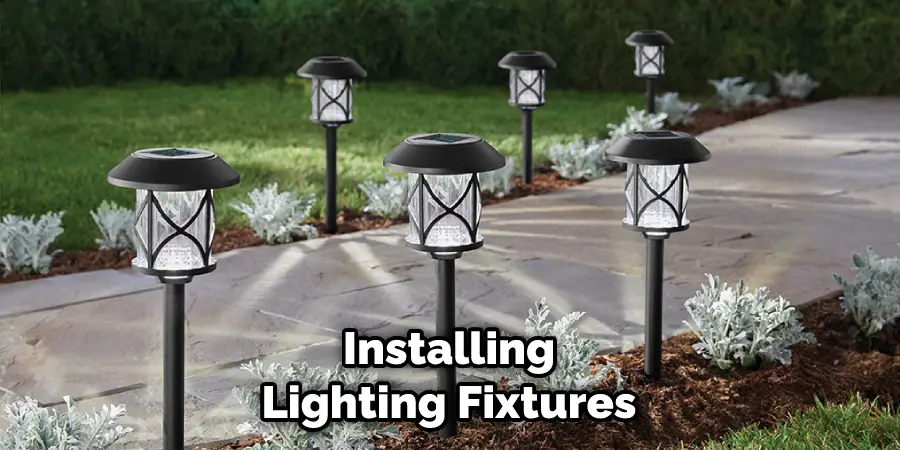
By following these steps, you will be able to create distinct outdoor areas without having to install a physical fence. This is an ideal solution for homeowners who want to section off multiple parts of their yards without the hassle and expense of building a fence.
It also allows for more flexibility as you can get creative with your landscaping materials, plants, and decorative features to create beautiful outdoor spaces.
Tips to Separate Yards Without a Fence
- Establish a clear property line. Before you can start to separate your yard, you need to know where your property line is. You can find this information by looking at your deed or by contacting your local zoning office. Once you know where your property line is, you can start to plan how you will separate your yard.
- Use landscaping to create boundaries. One way to separate your yard without a fence is to use landscaping features such as shrubs, trees, and flower beds. By placing these features along your property line, you can create a natural boundary between your yard and your neighbor’s.
- Install a privacy screen. Another way to separate your yard without a fence is to install a privacy screen. Privacy screens are available in a variety of materials, including wood, vinyl, and fabric. They can be placed on top of existing fences or they can be freestanding.
- Build a pergola or trellis. If you have some carpentry skills, you could build a pergola or trellis in your yard. These structures can provide both privacy and separation between your yard and your neighbor’s.
- Hang curtains or blinds. If you have an outdoor space that you would like to keep private, you could hang curtains or blinds from a pergola or trellis. You could also hang them from the eaves of your house or posts in your yard.
- Plant a hedge. Another way to create a boundary between your yard and your neighbors is to plant a hedge along your property line. Hedges can be made up of evergreen plants, such as boxwoods, or deciduous plants, such as holly bushes.
- Place potted plants along the property line. If you don’t want to plant anything in the ground, you could place potted plants along your property line instead. Potted plants can be moved around easily, so you can change up the look of your yard whenever you want.
- Use outdoor furniture to define spaces. Another way to separate your yard without a fence is to use outdoor furniture to create defined spaces within your yard. For example, you could place a table and chairs on one side of your yard and a lounge chair on the other side.
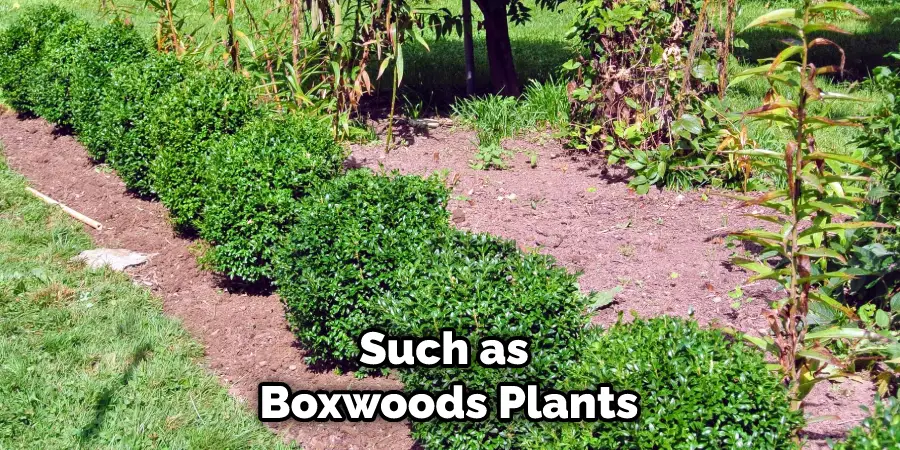
How do Establish Privacy and Separation with Outdoor Lighting?
Establishing privacy and separation using outdoor lighting is an effective way to make your outdoor space feel cozy and safe. Strategically placed lights can help to create a sense of seclusion without making the area feel overly dark.
Placing lights at varied heights, using dimmers for table lamps, or having colored LED lighting in certain areas all aid in creating a formal but inviting atmosphere.
Additionally, with careful placement, you can use light to define or separate different levels or sections within an outdoor area – such as between a deck and garden – providing a sense of division between spaces while still giving them a unified aesthetic.
Utilizing outdoor lighting effectively is an easy way to add privacy and nicely segmented spaces to any backyard or patio.
How to Construct Pergolas or Trellises for Yards Without a Fence?
Constructing pergolas or trellises in a yard without a fence can be an effective way to add detail and interest to an outdoor area. It is an easy project that requires few tools and resources. First, decide on the material for the structure. Wood is the most popular choice, but metal or PVC can also be used depending on the desired look.
Next, install posts firmly in the ground at each corner of the structure. Make sure they are plumb and level before attaching any beams or joists. These posts should then be joined by beams and joists to form a skeletal frame for your pergola or trellis.
Once everything is in place, finish it with lattice or other decorative pieces for added visual interest and practical use like providing shade from direct sunlight or supporting climbing plants like vines. By taking the time to properly build your pergola or trellis, you can have an inviting outdoor space that provides beauty and functionality.
Conclusion
If you have a shared yard with a neighbor and want to create defined spaces without putting up a fence. You should carefully determine how to separate yards without a fence. there are several things you can do. You can use landscaping features like trees, bushes, and gardens to create natural boundaries.
You can also use the outdoor furniture, décor items, and lighting fixtures to establish separate areas. By getting creative, you can turn your shared yard into two distinct outdoor spaces that both you and your neighbor can enjoy.
About
Outdoor Fixes is a distinguished figure in the world of Diy design, with a decade of expertise creating innovative and sustainable Diy solutions.
His professional focus lies in merging traditional craftsmanship with modern manufacturing techniques,
fostering designs that are both practical and environmentally conscious. As the author of diy,
outdoorfixes delves into the art and science of outdoorfixes-making, inspiring artisans and industry professionals alike.
Education RMIT University
(Melbourne, Australia) Associate Degree in Design (Outdoor Fixes) Focus on sustainable design, industry-driven projects,
and practical craftsmanship. Gained hands-on experience with traditional and digital manufacturing tools, such as CAD and CNC software.
Nottingham Trent University
(United Kingdom) Bachelor’s in outdoorfixes.com and Product Design (Honors) Specialized in product design with a focus on blending creativity with production
techniques. Participated in industry projects, working with companies like John Lewis and Vitsoe to gain real-world insights.
Publications and Impact
In diy, Outdoor Fixes his insights on indoor design processes, materials, and strategies for efficient production.
His writing bridges the gap between artisan knowledge and modern industry needs, making it a must-read for both budding designers and seasoned professionals.

